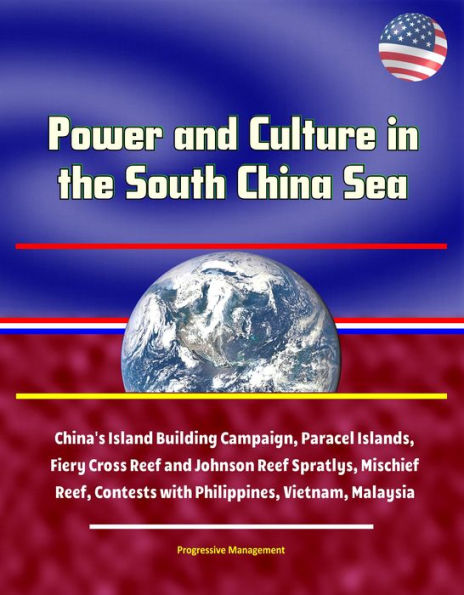This report has been professionally converted for accurate flowing-text e-book format reproduction. China is pursuing an island-building campaign across the South China Sea in support of its sovereignty claims that date from 1951. This is a contested air and maritime domain between China and the Philippines, Vietnam, Malaysia, and the Republic of China. The United States must make difficult foreign policy choices that will be informed by the analytical lens its leaders choose to assess China's actions. This essay uses two analytical lenses, Confucian strategic culture and offensive realism, to assess Chinese behavior in three test cases: Paracel Islands in 1974, Fiery Cross Reef and Johnson Reef in 1988, and Mischief Reef in 1994. It finds that the test cases clearly show that Chinese strategic choice aligns with offensive realism. If Chinese behavior is shaped by shifts and opportunities in the balance of power, then recommendations become straightforward. The United States is the only nation capable of balancing against China in the South China Sea. However, the proclaimed rebalance to the Pacific has done little to affect power dynamics in the region. The United States must aggressively pursue cooperation, basing, and training with our partners in Southeast Asia in order to rectify the current imbalance.
This compilation includes a reproduction of the 2019 Worldwide Threat Assessment of the U.S. Intelligence Community.
China's historic association with the teaching of Confucius has led some analysts to suggest that the PRC has inherited a strategic culture that reflects Confucian principles. Specifically, this strategic culture is associated with antimilitarism and a defensive grand strategy. Another useful lens draws it lineage from realism. Offensive realism is a strand of realism that is particularly useful since it makes testable predictions and its primary advocate, John Mearsheimer, has staked out positions on the theory's expectations with regards to China. Offensive realism states that great powers will seek to maximize their power over their neighbors in a bid to establish regional hegemony. This essay uses the framework of these two competing lenses to evaluate PRC behavior in the South China Sea using three separate cases: Paracel Islands in 1974, Fiery Cross Reef and Johnson Reef in 1988, and Mischief Reef in 1994. This essay first explains the competing theories and methodology, and then tests Confucian strategic culture and offensive realism against each of these cases. It finds that offensive realism is the most compelling analytical tool to understand and predict Beijing's decisions and actions in the South China Sea. I conclude with a summary of findings, implications, and recommendations for United States policy.
This report has been professionally converted for accurate flowing-text e-book format reproduction. China is pursuing an island-building campaign across the South China Sea in support of its sovereignty claims that date from 1951. This is a contested air and maritime domain between China and the Philippines, Vietnam, Malaysia, and the Republic of China. The United States must make difficult foreign policy choices that will be informed by the analytical lens its leaders choose to assess China's actions. This essay uses two analytical lenses, Confucian strategic culture and offensive realism, to assess Chinese behavior in three test cases: Paracel Islands in 1974, Fiery Cross Reef and Johnson Reef in 1988, and Mischief Reef in 1994. It finds that the test cases clearly show that Chinese strategic choice aligns with offensive realism. If Chinese behavior is shaped by shifts and opportunities in the balance of power, then recommendations become straightforward. The United States is the only nation capable of balancing against China in the South China Sea. However, the proclaimed rebalance to the Pacific has done little to affect power dynamics in the region. The United States must aggressively pursue cooperation, basing, and training with our partners in Southeast Asia in order to rectify the current imbalance.
This compilation includes a reproduction of the 2019 Worldwide Threat Assessment of the U.S. Intelligence Community.
China's historic association with the teaching of Confucius has led some analysts to suggest that the PRC has inherited a strategic culture that reflects Confucian principles. Specifically, this strategic culture is associated with antimilitarism and a defensive grand strategy. Another useful lens draws it lineage from realism. Offensive realism is a strand of realism that is particularly useful since it makes testable predictions and its primary advocate, John Mearsheimer, has staked out positions on the theory's expectations with regards to China. Offensive realism states that great powers will seek to maximize their power over their neighbors in a bid to establish regional hegemony. This essay uses the framework of these two competing lenses to evaluate PRC behavior in the South China Sea using three separate cases: Paracel Islands in 1974, Fiery Cross Reef and Johnson Reef in 1988, and Mischief Reef in 1994. This essay first explains the competing theories and methodology, and then tests Confucian strategic culture and offensive realism against each of these cases. It finds that offensive realism is the most compelling analytical tool to understand and predict Beijing's decisions and actions in the South China Sea. I conclude with a summary of findings, implications, and recommendations for United States policy.

Power and Culture in the South China Sea: China's Island Building Campaign, Paracel Islands, Fiery Cross Reef and Johnson Reef Spratlys, Mischief Reef, Contests with Philippines, Vietnam, Malaysia

Power and Culture in the South China Sea: China's Island Building Campaign, Paracel Islands, Fiery Cross Reef and Johnson Reef Spratlys, Mischief Reef, Contests with Philippines, Vietnam, Malaysia

Product Details
| BN ID: | 2940163293612 |
|---|---|
| Publisher: | Progressive Management |
| Publication date: | 07/28/2019 |
| Sold by: | Smashwords |
| Format: | eBook |
| File size: | 285 KB |
